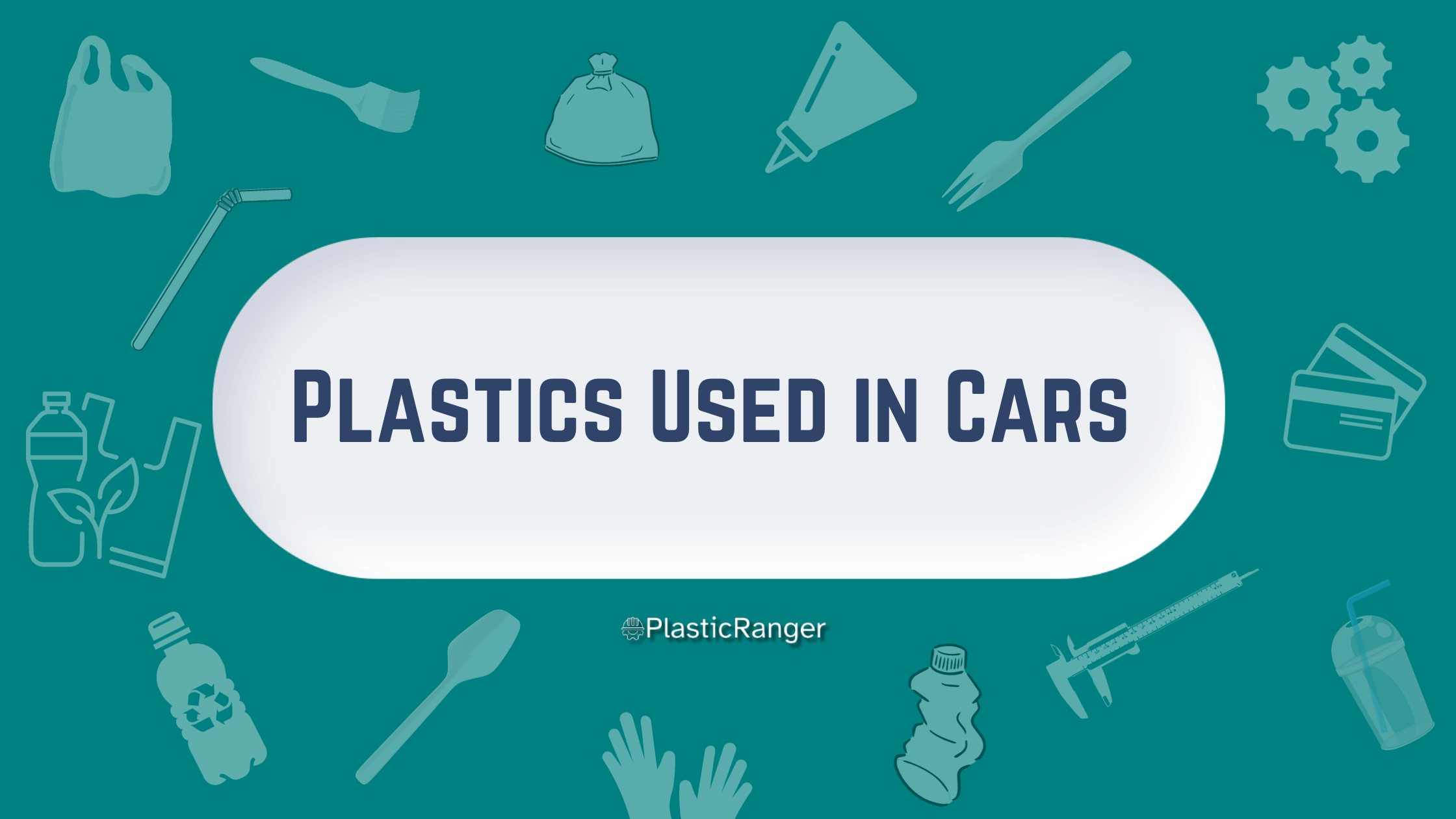In the complex tapestry of automotive manufacturing, plastic materials stand out as vital components due to their versatility, cost-effectiveness, and innovative potential.
Plastics have revolutionized car manufacturing from lightweight vehicles to fostering intricate design capabilities.
This immaculate guide delves into the multifaceted realm of plastic materials utilized in the automotive industry, illuminating the types of plastics used, their applications, and their notable contributions to the automotive world.

Plastics Used In Cars: A Prelude to Plastics in the Automotive Industry
The inception of plastics in the automotive sector dates back to the early 20th century, with the initial applications limited to small, non-structural components. However, as the scientific exploration and development of plastic materials burgeoned, so did their utilization in car manufacturing.
Today, a staggering variety of plastics with unique properties and capabilities can be found in vehicles, collectively contributing to safety, fuel efficiency, and aesthetic appeal.
Types of Plastic Materials
Let us venture into an exploration of the critical types of plastic materials that have found a firm foothold in the automotive sector:
Polypropylene (PP): Being lightweight and highly chemical resistant, polypropylene is used extensively in automotive interiors, bumpers, and other parts such as containers and carpet fibers.
Polyurethane (PU): Renowned for its flexibility and durability, PU finds applications in car seats, insulation foam, and interior trims.
Polyvinyl Chloride (PVC): Due to its excellent resistance to weathering and chemical corrosion, PVC is primarily used in car interiors and door panels and in wire and cable insulation.
Polycarbonate (PC): Recognized for its high impact resistance and clarity, Polycarbonate makes headlights, taillights, and other automotive lighting solutions.
Polyethylene (PE): This category of plastics, HDPE and LDPE, is used in fuel tanks, tubing, and containers owing to its lightweight and corrosion-resistant properties.
Acrylonitrile Butadiene Styrene (ABS): With high impact resistance and rigidity, ABS finds applications in dashboards, wheel covers, and body parts.
Polyamide (PA or Nylon): Distinguished by its high mechanical strength and thermal resistance, nylon is used in under-the-hood components like radiator end tanks and air intake manifolds.
Polymethyl Methacrylate (PMMA): Often known as acrylic or Plexiglas, PMMA is utilized in windows and sunroofs owing to its transparency and resistance to weathering.
Applications and Contributions to the Automotive Industry
Now, having acquainted ourselves with the major types of plastics, we shall unravel the numerous applications and the overarching contributions of these materials to the automotive industry.
Lightweight and Fuel Efficiency
Plastics have emerged as unsung heroes in an era where fuel efficiency is paramount. By replacing traditional materials like metal and glass, plastics have significantly reduced the weight of vehicles, thereby enhancing fuel efficiency and mitigating environmental impacts.
For instance, plastic components can be up to 50% lighter than their metal counterparts, directly reducing fuel consumption.
Safety Innovations
Plastics have also played a pivotal role in augmenting the safety features of vehicles. From crumple zones that absorb energy during collisions to airbag containers and seatbelts, plastics have facilitated the creation of safer cars.
Additionally, the advent of high-strength polymers has led to the development of shatter-resistant windshields and windows, further enhancing safety.
Design Flexibility and Aesthetics
Plastics offer remarkable design flexibility, enabling manufacturers to create complex, aesthetically pleasing, and ergonomic designs.
The malleability and versatility of plastics have fostered innovations in vehicle interiors, exteriors, and intricate components that would be exceedingly difficult to achieve with traditional materials.
Cost-Effectiveness and Sustainability
Plastics are generally more cost-effective to produce and process than metals, making them an attractive choice for manufacturers aiming to reduce production costs without compromising quality.
Moreover, plastics have opened up avenues for recycling and reuse, contributing to a circular economy and reducing the environmental footprint of the automotive industry.
Technological Advancements and Future Prospects
With the ongoing research and technological advancements in plastics, new materials with enhanced properties are constantly being developed. For instance, the emergence of bioplastics, made from renewable resources, hints at a future where the automotive industry can further reduce its reliance on fossil-based materials.
Navigating the Future
As we navigate the dynamic landscape of the automotive industry, the role of plastics appears to be ever-evolving. From facilitating the development of electric and autonomous vehicles to enabling intelligent, connected cars equipped with advanced sensors and electronics, plastics are poised to continue their innovation and transformation journey.
Wrapping Up
In conclusion, using plastic materials in car manufacturing is a testament to human ingenuity and the relentless pursuit of progress. As this guide elucidates, plastics have significantly contributed to the modernization of the automotive industry, touching upon various facets, including safety, efficiency, design, and sustainability.
Plastics will undeniably continue to shape the future of automotive manufacturing, steering us toward a more efficient, safe, and sustainable mobility landscape.
Quick Navigation
